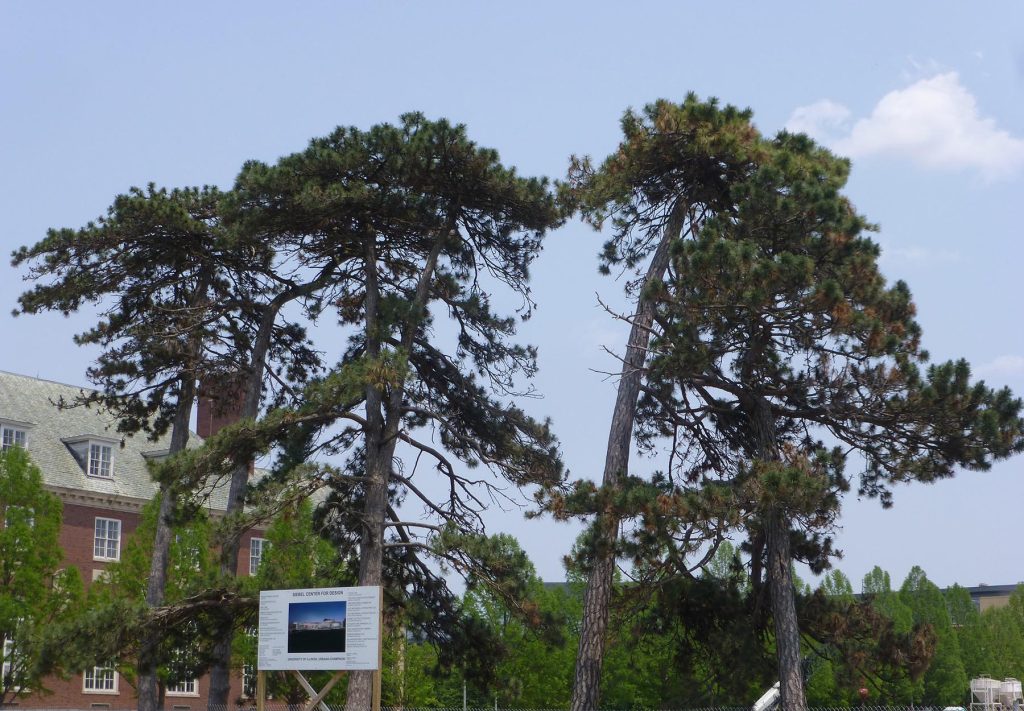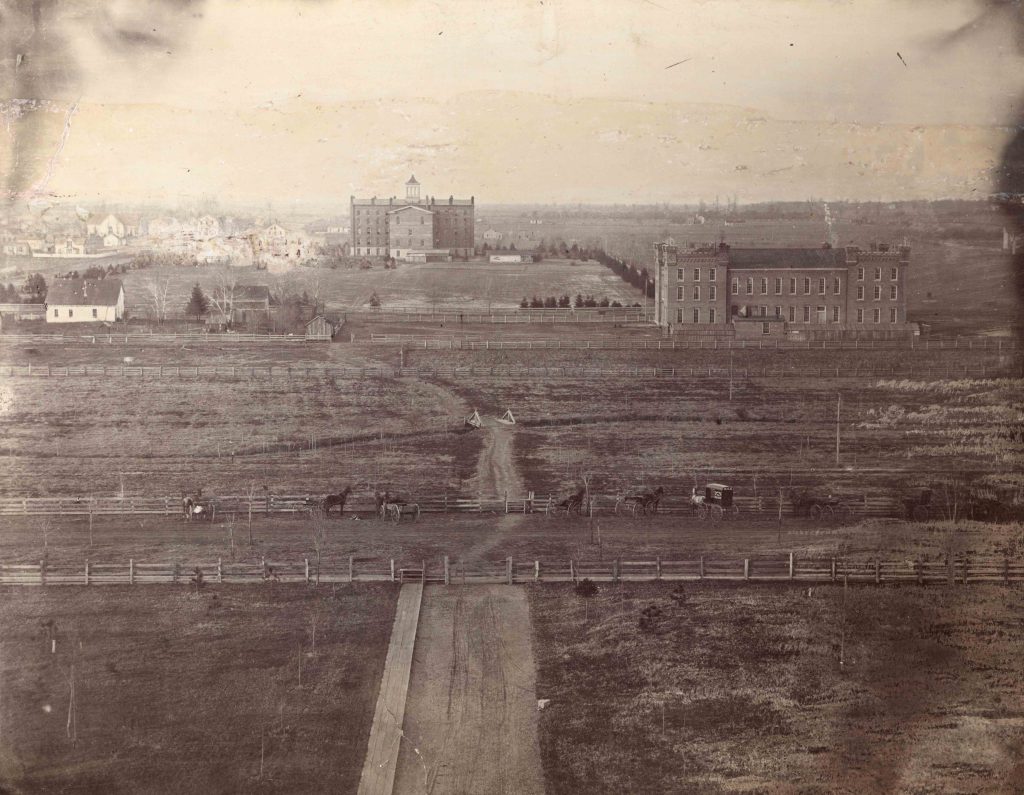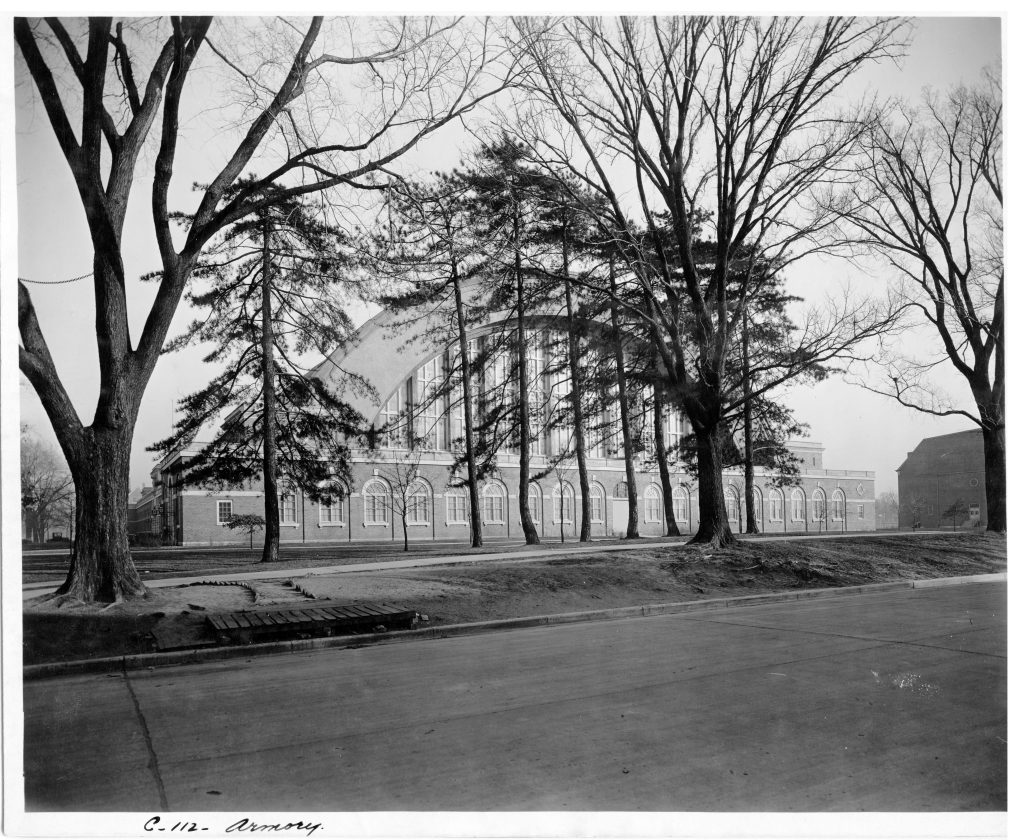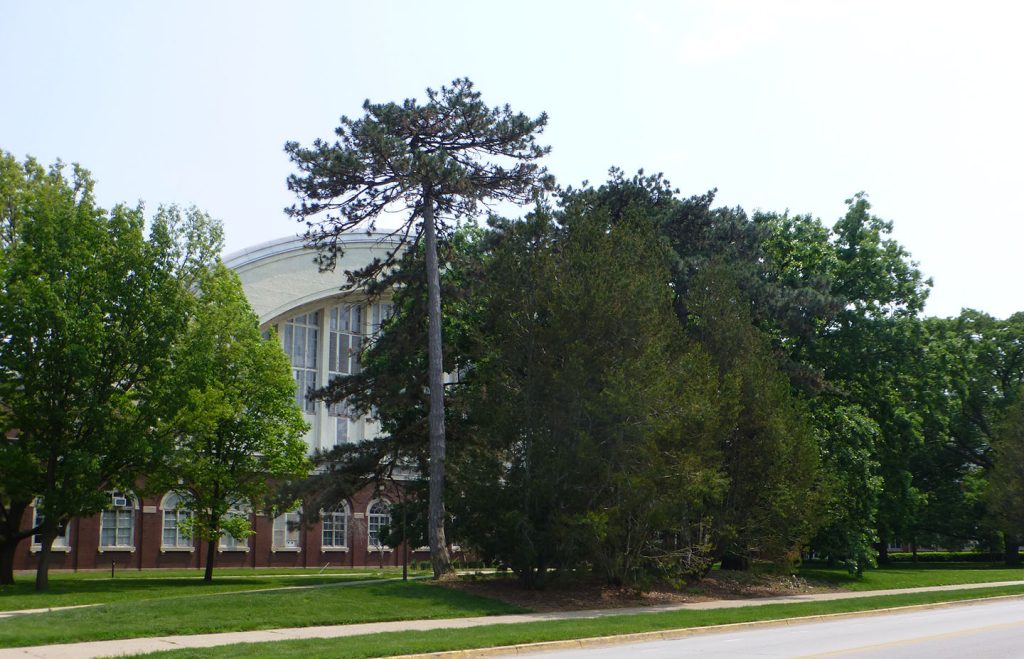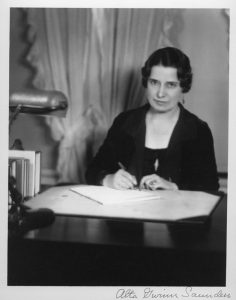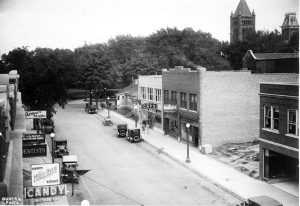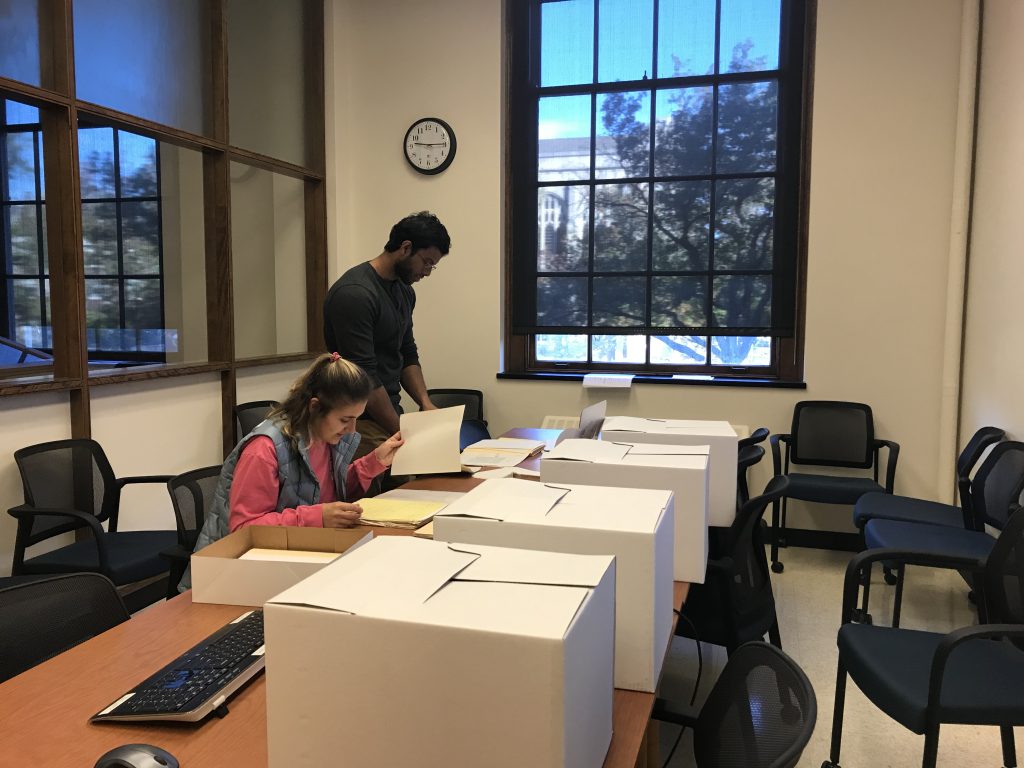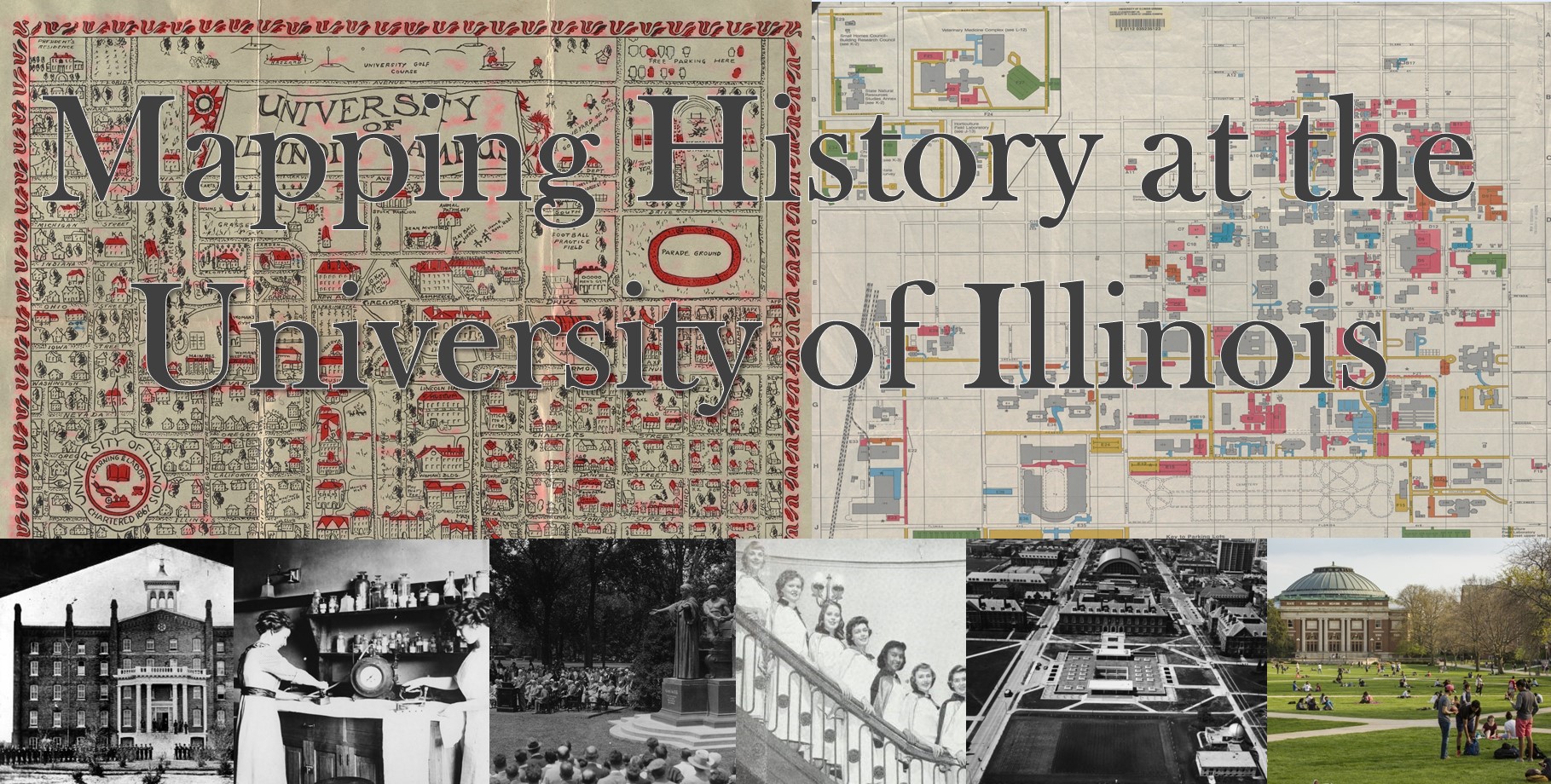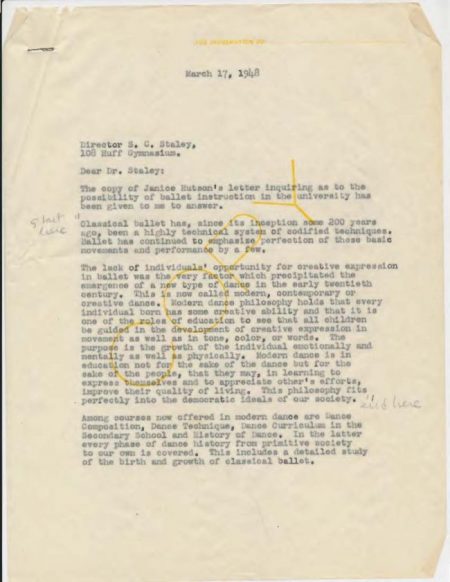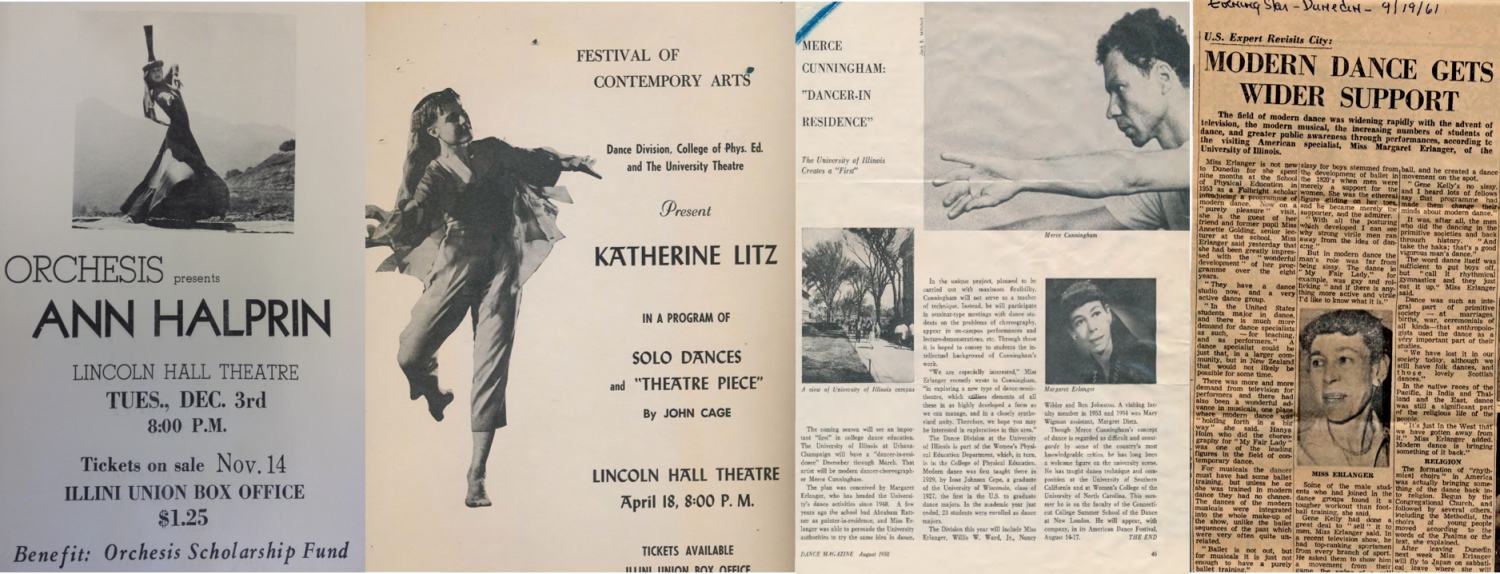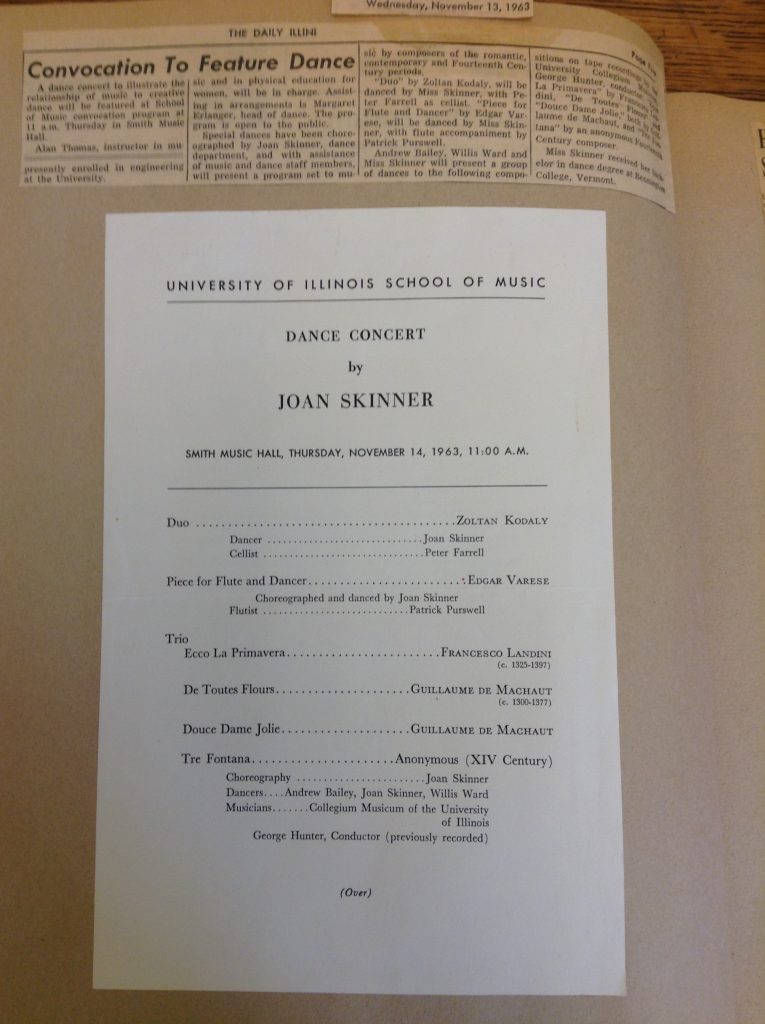How many times have you gone down 4th St. by the Armory or Huff Hall? Probably hundreds of times, right? It so happens that when you do, you’re passing some of the last vestiges of the Illinois Industrial University, as the U of I was called 150 years ago.
Where are these vestiges? Just look up. It’s the trees—several tall, shaggy Austrian Pines, to be precise. They are all that’s left of a series of windbreaks that were planted 150 years ago this week, between June 1 and June 7, 1869.
With both Champaign and Urbana having Tree City USA designations today, it’s hard to believe that in 1868, when the first students arrived, the only landscape feature, aside from the lone sycamore south of Gregory Hall, was one, lone university building surrounded by acres and acres of open fields. It’s not surprising that one Trustee even said that “the University Building looked like a stake driven into the ground.” At least one student wrote home to bemoan the mud and desolation in which she found herself.
Enter the College of Agriculture, which in 1869 planted several windbreaks on what they considered the far edges of an imagined, future campus. They included a hedge of osage orange, many silver maples, Norway spruces, red cedar, and 110 Austrian pines planted along 4th street to protect the experimental orchards. It’s all described in considerable detail in the Trustee’s Report of March 1870, right down to the locations and how many feet apart they planted the trees. At last, something besides a lone building existed on what was to become the tree-studded campus of one of the world’s great universities.
Want to see these original, living relics? There are still about a dozen of the Austrian Pines found on the east side of 4th St from just west of the Armory to the northeast corner of Pennsylvania Ave. For one of the most distinctive groups, look for the five tall trees directly behind the construction sign for the Siebel Center for Design, just south of Huff Hall.
Or, if you’re at the northeast corner of the Armory and 4th St., you’ll see a lone, tall tree standing like an umbrella. Stand by its trunk and look south to see the trunks of three more that are partially hidden from the street by lower growing trees.
A further one is near the southernmost door of Huff Hall. Until they were removed this spring, two more could be found immediately west of the Art and Design Building. All these trees date back to 150 years ago this week, making them the oldest mark left on the landscape by the University of Illinois. They even predate Mumford House, the oldest University building. There is nothing else on campus—not a building, not a marker—that connects so closely to the beginnings of this university.
It’s important to respect and pay attention to our landscape, especially when there are building projects, or else we’ll lose part of the identity of this university. It’s part of what makes this campus the attractive place that people remember. The natural environment is fragile. Take note of these ‘monuments’ while they are still here.
